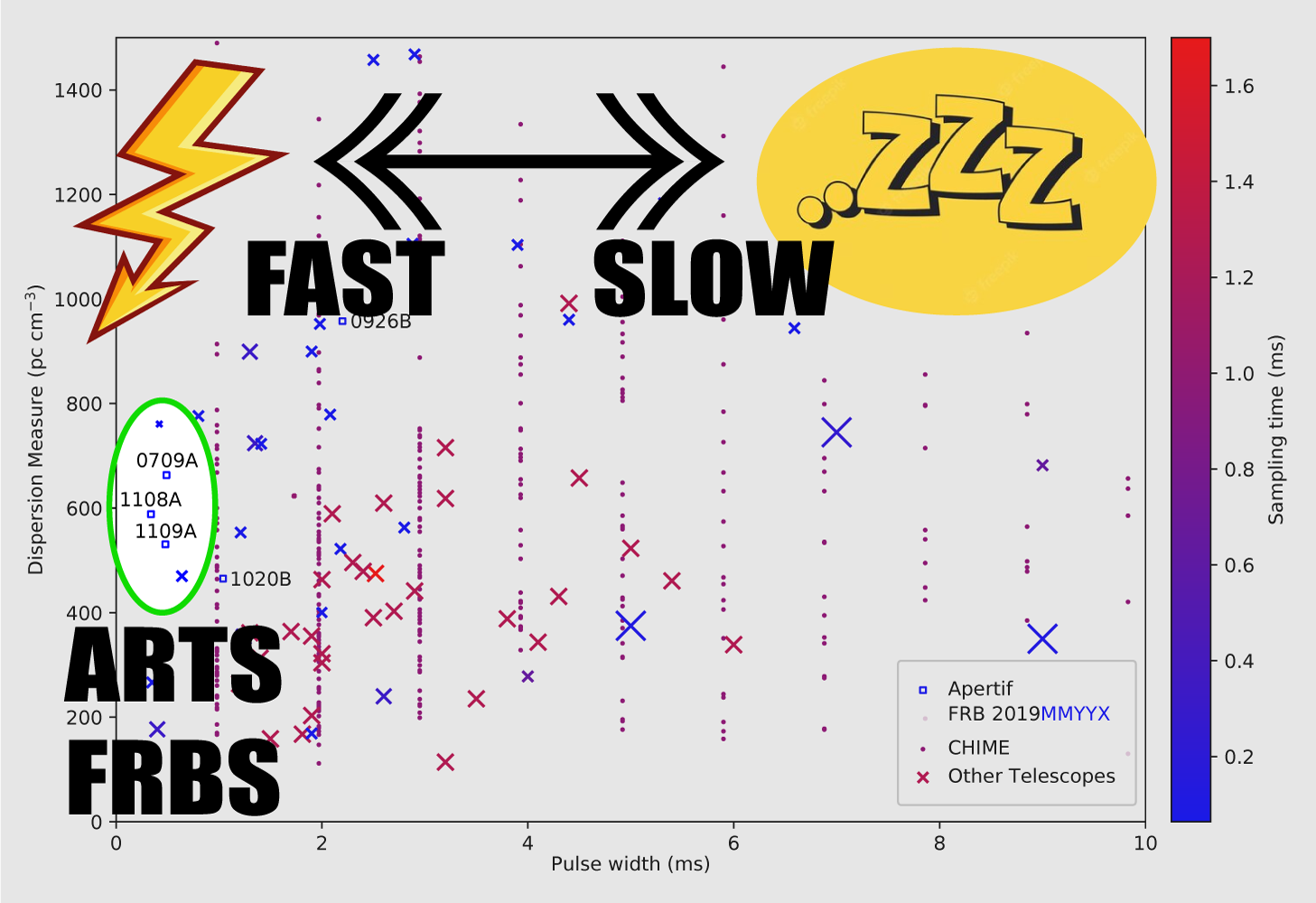Daily Image
15-05-2023How ARTS Finds FRBs III -- Don't blink: the FRB sky in sharp view with WSRT.
| Submitter: | Joeri van Leeuwen |
| Description: | The Apertif Radio Transient System (ARTS) is a supercomputing instrument that performed real-time detection and localisation of Fast Radio Bursts (FRBs) on Apertif at Westerbork. In a series of images we highlight some of the cutting-edge algorithms and results that allowed it to become the one of the most productive FRB search systems in the world. The overview paper, including the description of the first 5 FRB discoveries was recently published in A&A (van Leeuwen, Kooistra et al. 2023). Featured Previously: I: Innovative Hierarchical Beamforming. II: The formation of the Synthesized Beam (SBs) during subband dedispersion. Today = Don't blink: the FRB sky in sharp view with WSRT. In this daily image we show the FRB pulse width in milliseconds on the horizontal axis, versus the dispersion measure (which is roughly the distance between the FRB and us) on the vertical axis, for the 5 FRBs presented in this first paper. We contrast these ARTS FRBs against all known bursts at the time, discovered by other telescopes. Clearly the Apertif FRBs are among the narrowest, fastest known! Why is that? All telescopes see the same sky after all. The reason is that ARTS has a very high native time resolution, and very good frequency resolution. This means the instrument does not smear out the pulses much. Such smearing makes it harder to find FRBs. For comparison, the ARTS time and frequency resolution are 10x and 5x higher (!!), respectively, than for ASKAP. Other telescopes do not have such high resolution, and they see the sky through time-blurred glasses. They appear to miss these fast FRBs. Only with a system like ARTS can one see and study the fast radio sky at its intrinsic timescales. That is important because FRBs are some of the most energy-rich events in the Universe and we are not sure what creates them. We have now shown that FRBs are generally even faster emitters than was known before -- suggesting they are caused by compact bright emitters such as neutron stars. |
| Copyright: | JvL et al. |
| Tweet |  |
